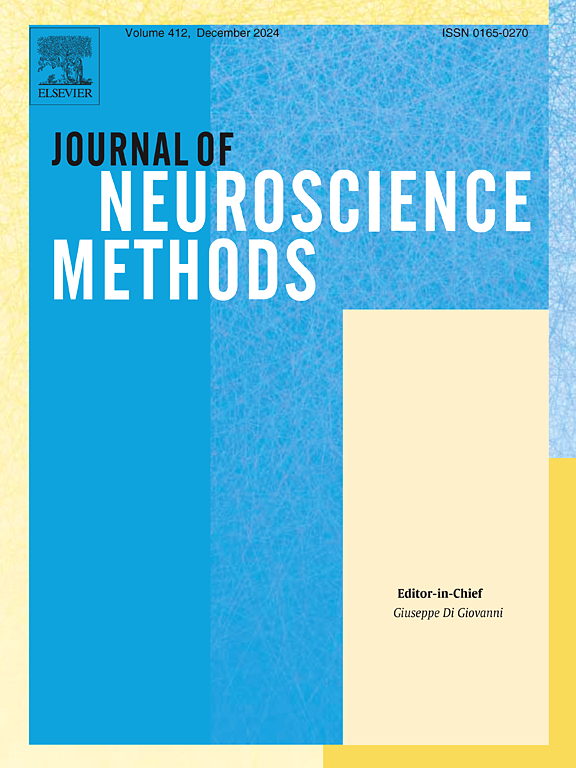Minimizing hearing loss: A novel surgical approach for round window exposure in miniature pigs
IF 2.7
4区 医学
Q2 BIOCHEMICAL RESEARCH METHODS
引用次数: 0
Abstract
Background
A delicate operation for exposing the round window without affecting the hearing function is critical for auditory research. Despite the different surgical approaches proposed for miniature pigs, hearing protection during operation is still challenging. The efficient solution to this problem is significant for accurate auditory research.
New method
Eight healthy Diannan miniature pigs, aged three months and of both sexes, with normal hearing, were utilized. Three pigs were employed for anatomical studies. Based on the findings from these anatomical investigations, we propose the facial nerve medial approach designed to expose the round window while preserving hearing function in the porcine model. The remaining five pigs were used to verify the surgical approach and hearing function.
Results
The anatomy study confirmed that the lateral side of the round window was the genu of the facial nerve. Removing the medial wall of the genu part of the facial nerve canal allows access to the tympanic cavity and exposes the round window. The facial nerve medial approach effectively exposed the round window in vivo, with no significant change in auditory brainstem response threshold immediately post-operation.
Comparison with existing methods
The facial nerve medial approach to exposing the round window preserved the sound transmission structures of the ear, maintaining hearing function post-operation.
Conclusions
The facial nerve medial approach with a retroauricular incision allows access to the tympanic cavity and exposes the round window without impacting hearing, making it ideal for accurate auditory research in miniature pigs.
最大限度地减少听力损失:一种新的手术方法为圆形窗口暴露在小型猪
背景如何在不影响听觉功能的前提下将圆窗暴露出来,是听觉研究的关键。尽管对小型猪提出了不同的手术方法,但手术期间的听力保护仍然具有挑战性。有效地解决这一问题对准确的听觉研究具有重要意义。新方法选用听力正常、3月龄、雌雄健康的滇南小型猪8头。3头猪用于解剖研究。基于这些解剖研究结果,我们提出了面神经内侧入路,旨在暴露圆形窗口,同时保留猪模型的听力功能。其余5头猪用于验证手术入路和听力功能。结果解剖研究证实,圆窗外侧为面神经膝。去除面神经管膝部的内侧壁,进入鼓室,露出圆窗。面神经内侧入路在体内有效暴露圆窗,术后即刻听神经脑干反应阈值无明显变化。与现有方法的比较面神经内侧入路暴露圆窗保留了耳的传声结构,维持了术后的听力功能。结论面神经内侧入路经耳后切口进入鼓室,暴露圆形窗口,不影响听力,是小型猪精确听觉研究的理想选择。
本文章由计算机程序翻译,如有差异,请以英文原文为准。
求助全文
约1分钟内获得全文
求助全文
来源期刊

Journal of Neuroscience Methods
医学-神经科学
CiteScore
7.10
自引率
3.30%
发文量
226
审稿时长
52 days
期刊介绍:
The Journal of Neuroscience Methods publishes papers that describe new methods that are specifically for neuroscience research conducted in invertebrates, vertebrates or in man. Major methodological improvements or important refinements of established neuroscience methods are also considered for publication. The Journal''s Scope includes all aspects of contemporary neuroscience research, including anatomical, behavioural, biochemical, cellular, computational, molecular, invasive and non-invasive imaging, optogenetic, and physiological research investigations.
 求助内容:
求助内容: 应助结果提醒方式:
应助结果提醒方式:


